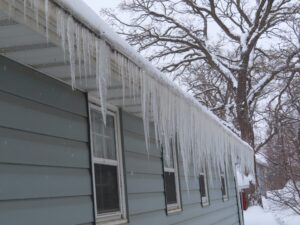
Fig. 1 Illustration showing 2nd floor of home. Area behind the knee wall is typically called a knee wall space. This is the most common type of structure to have ice dam issues
Ice dams most commonly occur in older homes as a result of inadequate insulation and/or ventilation. We will cover how ice dams happen in homes built with knee walls, and how it can be prevented.
Typically, these types of homes are one and half-stories with an attic on top, and a sloped ceiling resting on a knee wall. Behind the knee wall there is an attic space often called a knee wall space (Fig. 1). This is the most common type of structure to have ice dam issues because the knee wall space is rarely put together right as do-it-yourselfers have tried to correct problems incorrectly over the years.

Fig. 2 Heat loss from the home is melting snow on the roof. As the water drains to the area of the roof that is on the outside of the exterior wall it will freeze and a dam of ice will form.
Ice dams may happen when warm air from inside the home leaks into the attic or knee wall space and warms up the roof structure. This will cause the snow on the roof to melt and turn into water. The water will drain down the roof until it reaches the area of the roof that is on the outside of the exterior wall and freeze back up (Fig. 2). A dam of ice will form and slowly build up on the roof. As the snow keeps melting water will accumulate by the ice, and eventually leak into the home.
HOW TO PROPERLY INSULATE A KNEE WALL SPACE
With a knee wall space you have two options: option A, you can create a cold space or option B, you can create a conditioned space (Fig. 3). Note: you need to use one option, rather than using a combination of both. This is where most home owners go wrong as they choose a combination of both options, which will lead to cold temperatures on the 2nd floor and ice forming on the roof.

Fig 3: A knee wall space should either be a condition space or a cold space. It cannot be a combination of both.
Option A: A cold space
With this option you will insulate the floor, insulate the interior wall (including the access door), and ventilate the knee wall space. It is crucial to ensure that the area where the floor meets the roof structure is well insulated and that the knee wall space has proper ventilation to prevent ice dams on the roof. (Fig 3, option A.)
Option B: A conditioned space
With this option the knee wall space is conditioned and can be used for storage. You will insulate the roof structure and the exterior end walls. No insulation is necessary on the floor or interior wall, and no ventilation is needed. (Fig 3, option B.)
Other things that can help
Removing snow from the roof, installing heat tape at the eaves and in the gutters (Fig. 4), and making sure your gutters are clean from debris can also help or prevent from ice dams.
Ice Dam Photos
- The weight from the ice can damage the gutters
- Large icicles can also be a safety hazard
- Areas where insulation is lacking can be seen in blue
- Water leaking through the roof structure and into the knee wall space





